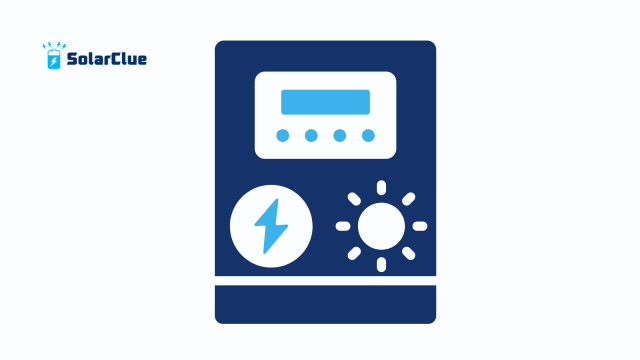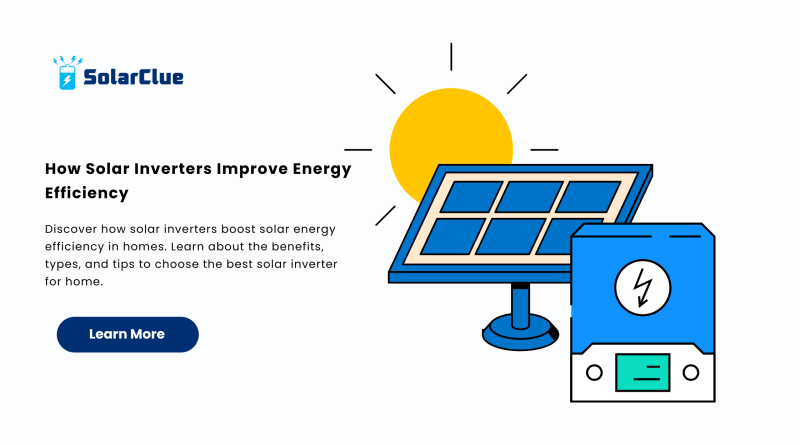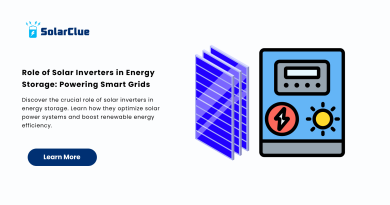How Solar Inverters Improve Energy Efficiency
Harnessing solar energy is not just about installing solar panels. The often overlooked yet critical component that maximizes energy conversion is the solar inverter. If you’re seeking to make the most out of your solar system, understanding how solar inverters improve energy efficiency is key. In this article, we’ll break down their function, benefits, and how to choose the best solar inverter for home use.
Table of Contents
- 1 What is a Solar Inverter?
- 2 Key Functions of Solar Inverters
- 3 Why Solar Inverters are Crucial for Solar Energy Efficiency
- 4 Types of Solar Inverters
- 5 Benefits of Using a High-Quality Solar Inverter
- 6 How to Choose the Best Solar Inverter for Home
- 7 Common Features in Modern Solar Inverters
- 8 Installation Tips for Maximum Efficiency
- 9 How Inverters Interact with Solar Batteries
- 10 Grid-Tied vs. Off-Grid Inverters
- 11 Future of Solar Inverters
- 12 Cost vs. Value
- 13 Real-World Impact
- 14 Conclusion
- 15 FAQs
What is a Solar Inverter?
A solar inverter is a device that converts the direct current (DC) electricity produced by solar panels into alternating current (AC) electricity, which is what most household appliances use. Without it, the solar energy your system captures can’t be used efficiently in your home.
Key Functions of Solar Inverters
- DC to AC power conversion
- Monitoring energy production
- Maximizing power output
- Ensuring grid compatibility
Why Solar Inverters are Crucial for Solar Energy Efficiency
While solar panels capture sunlight, it’s the solar inverter that ensures this energy is usable. By efficiently converting DC to AC, it minimizes energy loss. This process directly affects your system’s solar energy efficiency.
Reducing Energy Loss
High-efficiency solar inverters use advanced algorithms to optimize energy flow, reducing the loss of energy during conversion.
Smart Monitoring
Modern inverters come with smart monitoring capabilities, letting homeowners track performance and identify issues before they cause significant energy loss.
Types of Solar Inverters
Choosing the right type of solar inverter for home use is crucial. Here are the most common types:
String Inverters
These are connected to a series of solar panels. Ideal for homes with minimal shading.
Microinverters
Each panel has its own inverter, increasing efficiency in shaded or complex roof environments.
Hybrid Inverters
These allow for both solar and battery storage use, increasing energy independence and overall system efficiency.
Benefits of Using a High-Quality Solar Inverter
Improved Conversion Rates
Higher quality inverters convert more of the captured solar energy into usable electricity.
Extended System Lifespan
Efficient inverters reduce stress on the system, helping your solar installation last longer.
Better ROI
With higher solar energy efficiency, you’ll see faster returns on your solar investment.
How to Choose the Best Solar Inverter for Home
Assess Your Energy Needs
Calculate your daily electricity usage to determine the right inverter capacity.
Consider Compatibility
Ensure the inverter is compatible with your solar panel type and your local electricity grid.
Evaluate Warranty and Support
Look for inverters with long warranties and solid customer support. Reliable brands often provide 5 to 10-year warranties.
Common Features in Modern Solar Inverters
- Wi-Fi connectivity for remote monitoring
- Overload protection
- Temperature control systems
- Built-in safety shutdowns
Installation Tips for Maximum Efficiency

- Install in shaded, ventilated areas to avoid overheating
- Use professional installers to ensure optimal setup
- Regularly clean and maintain the inverter
How Inverters Interact with Solar Batteries
Pairing a solar inverter with battery storage allows homeowners to store excess power and use it during peak times, increasing your solar energy efficiency further.
Grid-Tied vs. Off-Grid Inverters
Grid-Tied
Perfect for urban areas, these feed excess energy back into the grid.
Off-Grid
Used in remote locations, these inverters work with battery systems for total independence.
Future of Solar Inverters
With AI and IoT integration, inverters are becoming smarter, offering real-time analytics, predictive maintenance, and even weather forecasting capabilities.
Cost vs. Value
Investing in a more expensive, high-efficiency solar inverter for home use pays off through better performance, longer lifespan, and increased savings on electricity bills.
Real-World Impact
Homeowners across India are seeing up to a 20% increase in their solar energy efficiency just by upgrading to a newer, more efficient solar inverter.
Conclusion
A solar inverter isn’t just an accessory—it’s the heart of your solar energy system. Choosing the right one ensures your system runs smoothly, lasts longer, and provides better returns. To truly maximize your energy savings, invest wisely in a solar inverter for home.
Visit SolarClue.com to explore premium inverters or check out detailed insights and tips at blog.solarclue.com and start your energy-efficient journey today!
FAQs
1. How does a solar inverter improve energy efficiency?
It minimizes energy loss during DC to AC conversion, ensuring more of your solar power is usable.
2. Which type of solar inverter is best for home use?
Microinverters are ideal for shaded roofs; string inverters work well for unshaded, simple installations.
3. Can I monitor my solar inverter remotely?
Yes, many modern inverters come with mobile apps or web portals for real-time monitoring.
4. How long does a solar inverter last?
Typically 10-15 years, depending on brand and maintenance.
5. Is a solar inverter necessary for off-grid systems?
Absolutely. Off-grid systems rely on inverters to convert and manage stored solar energy.




